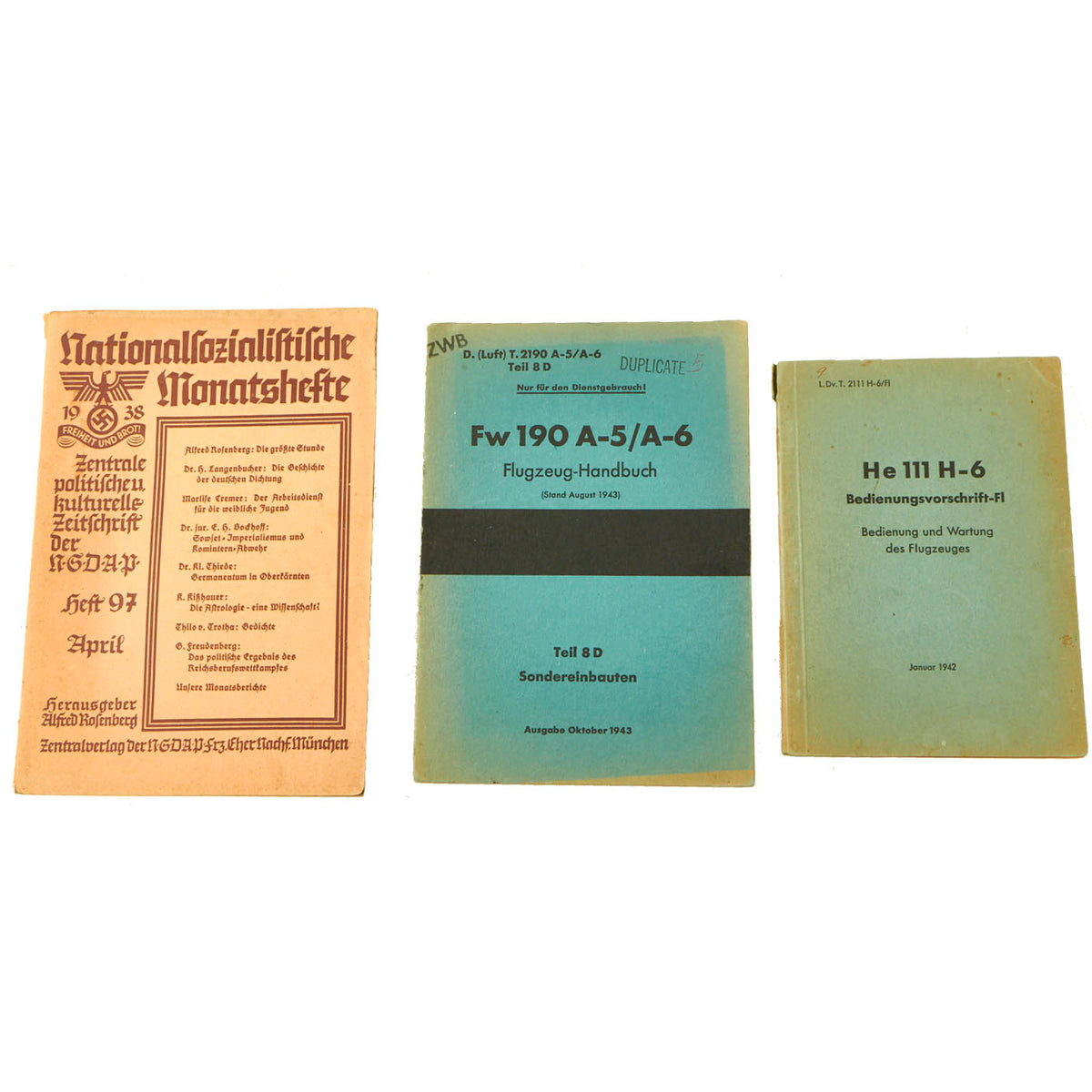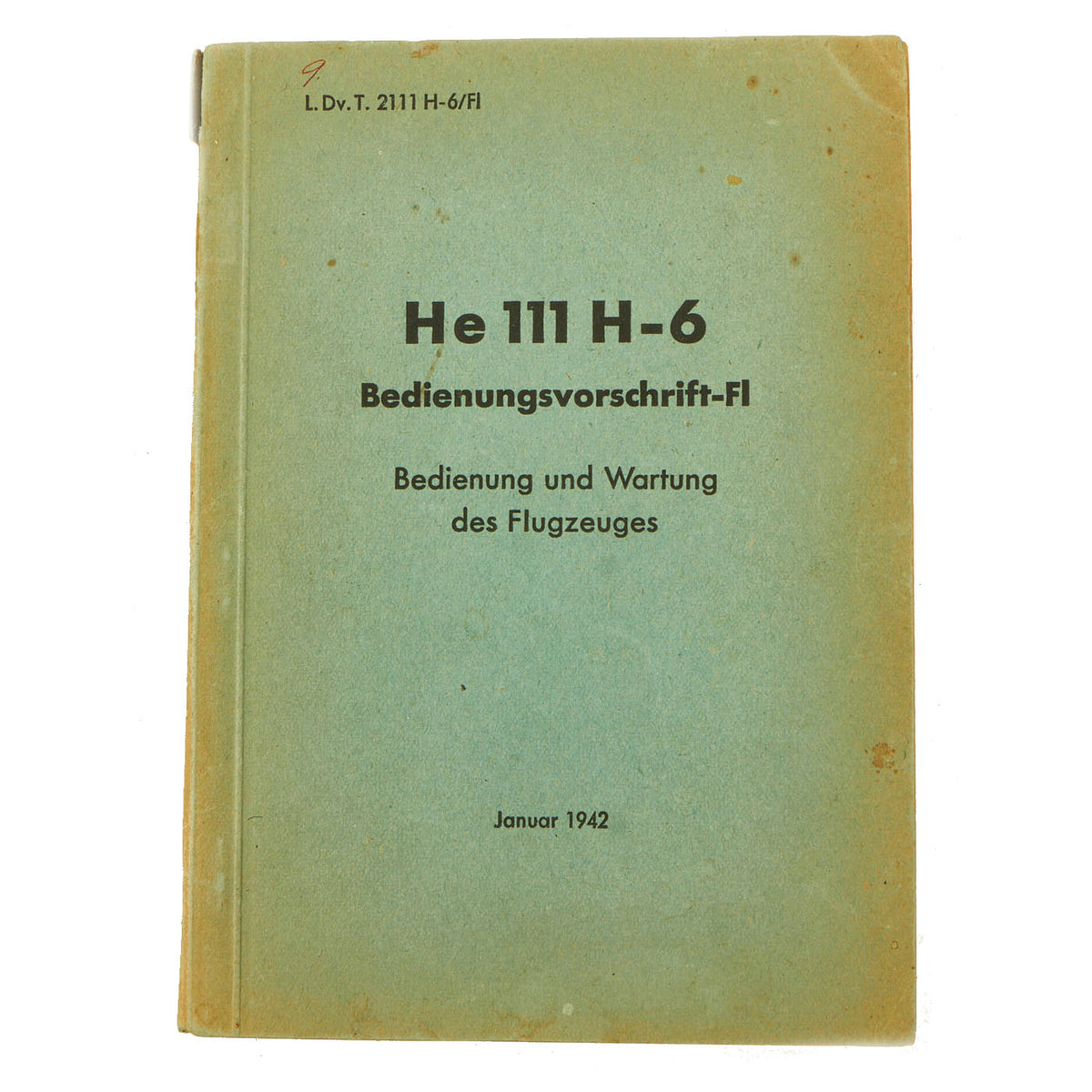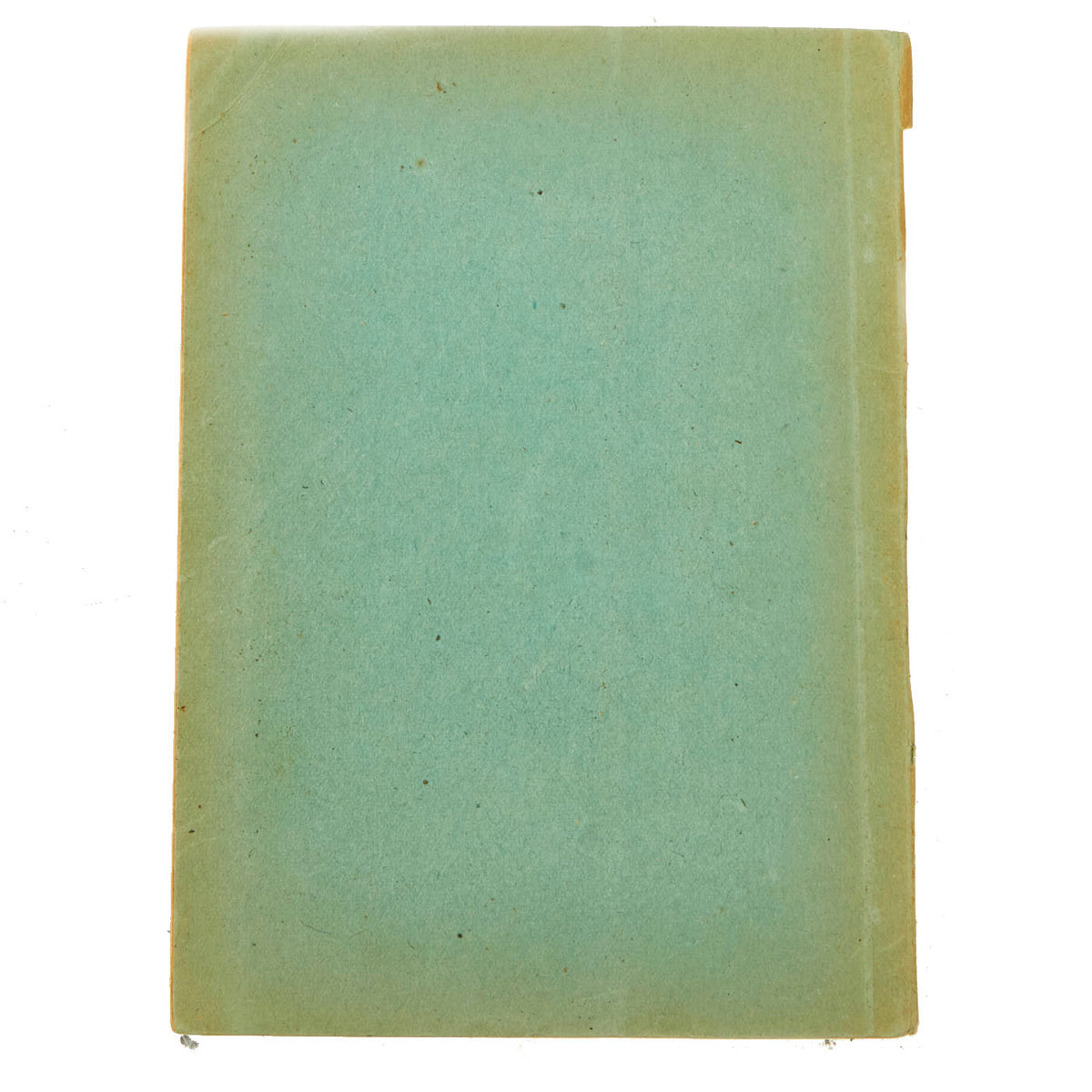Original German WWII Luftwaffe Aircraft Flight Manuals For The Focke-Wulf 190 and Heinkel He 111 With 1938 Dated National Socialist Magazine – 3 Items Original Items
$ 195,00 $ 78,00
Original Items: Only One Lot of 3 Available. An aircraft flight manual (AFM) is a paper book or electronic information set containing information required to operate an aircraft of certain type or particular aircraft of that type (each AFM is tailored for a specific aircraft, though aircraft of the same type naturally have very similar AFMs). The information within an AFM is also referred to a Technical Airworthiness Data (TAWD). A typical flight manual will contain the following: operating limitations, Normal/Abnormal/Emergency operating procedures, performance data and loading information.
The Items In this Lot:
– Focke-Wulf Fw 190 A-5/A-6 Flight Handbook Dated 1943: This manual is 12 pages long, and is marked Teil 8 D / Sondereinbauten (Part 8 D special installations) at the bottom, so this is part of a series of smaller manuals. The inside of the front cover lists the other smaller manuals about specific parts.
The Focke-Wulf Fw 190 is a German single-seat, single-engine fighter aircraft designed by Kurt Tank at Focke-Wulf in the late 1930s and widely used during World War II. Along with its well-known counterpart, the Messerschmitt Bf 109, the Fw 190 became the backbone of the Jagdwaffe (Fighter Force) of the Luftwaffe. The twin-row BMW 801 radial engine that powered most operational versions enabled the Fw 190 to lift larger loads than the Bf 109, allowing its use as a day fighter, fighter-bomber, ground-attack aircraft and to a lesser degree, night fighter.
The Fw 190A started flying operationally over France in August 1941 and quickly proved superior in all but turn radius to the Spitfire Mk. V, the main front-line fighter of the Royal Air Force (RAF), particularly at low and medium altitudes. The 190 maintained superiority over Allied fighters until the introduction of the improved Spitfire Mk. IX. In November/December 1942, the Fw 190 made its air combat debut on the Eastern Front, finding much success in fighter wings and specialized ground attack units (Schlachtgeschwader – Battle Wings or Strike Wings) from October 1943.
The Fw 190A series’ performance decreased at high altitudes (usually 6,000 m (20,000 ft) and above), which reduced its effectiveness as a high-altitude interceptor. From the Fw 190’s inception, there had been ongoing efforts to address this with a turbo supercharged BMW 801 in the B model, the much longer-nosed C model with efforts to also turbocharge its chosen Daimler-Benz DB 603 inverted V12 powerplant, and the similarly long-nosed D model with the Junkers Jumo 213. Problems with the turbocharger installations on the -B and -C subtypes meant only the D model entered service in September 1944. These high-altitude developments eventually led to the Focke-Wulf Ta 152, which was capable of extreme speeds at medium to high altitudes (755 km/h (408 kn; 469 mph) at 13,500 m (44,300 ft)). While these “long nose” 190 variants and the Ta 152 derivative especially gave the Germans parity with Allied opponents, they arrived too late to affect the outcome of the war.
The Fw 190 was well-liked by its pilots. Some of the Luftwaffe’s most successful fighter aces claimed many of their kills while flying it, including Otto Kittel, Walter Nowotny and Erich Rudorffer. The Fw 190 had greater firepower than the Bf 109 and, at low to medium altitude, superior maneuverability, in the opinion of German pilots who flew both fighters. It was regarded as one of the best fighter planes of World War II.
– Heinkel He 111 Operating Instructions Dated 1942: This manual is 63+ pages long, with some fold out diagrams and extra pages for notes. The Heinkel He 111 is a German airliner and bomber designed by Siegfried and Walter Günter at Heinkel Flugzeugwerke in 1934. Through development, it was described as a “wolf in sheep’s clothing”. Due to restrictions placed on Germany after the First World War prohibiting bombers, it was presented solely as a civil airliner, although from conception the design was intended to provide the nascent Luftwaffe with a heavy bomber.
Perhaps the best-recognised German bomber of World War II due to the distinctive, extensively glazed “greenhouse” nose of the later versions, the Heinkel He 111 was the most numerous Luftwaffe bomber during the early stages of the war. It fared well until it met serious fighter opposition during the Battle of Britain, when its defensive armament was found to be inadequate. As the war progressed, the He 111 was used in a wide variety of roles on every front in the European theater. It was used as a strategic bomber during the Battle of Britain, a torpedo bomber in the Atlantic and Arctic, and a medium bomber and a transport aircraft on the Western, Eastern, Mediterranean, Middle Eastern, and North African Front theatres.
The He 111 was constantly upgraded and modified, but had still become obsolete by the latter part of the war. The failure of the German Bomber B project forced the Luftwaffe to continue operating the He 111 in combat roles until the end of the war. Manufacture of the He 111 ceased in September 1944, at which point piston-engine bomber production was largely halted in favour of fighter aircraft. With the German bomber force virtually defunct, the He 111 was used for logistics.
Production of the Heinkel continued after the war as the Spanish-built CASA 2.111. Spain received a batch of He 111H-16s in 1943 along with an agreement to license-build Spanish versions. Its airframe was produced in Spain under license by Construcciones Aeronáuticas SA. The design differed significantly only in the powerplant used, eventually being equipped with Rolls-Royce Merlin engines. These remained in service until 1973.
– National Socialist Magazine For The Month of April 1938: Just like any other monthly propaganda booklet during the Third Reich era, this is filled with exactly what you would expect to find in the pages.
Comes more than ready for further research and display.
Fast Shipping with Professional Packaging
Thanks to our longstanding association with UPS FedEx DHL, and other major international carriers, we are able to provide a range of shipping options. Our warehouse staff is expertly trained and will wrap your products according to our exact and precise specifications. Prior to shipping, your goods will be thoroughly examined and securely secured. We ship to thousands clients each day across multiple countries. This shows how we're dedicated to be the largest retailer on the internet. Warehouses and distribution centres can be located throughout Europe as well as the USA.
Note: Orders with more than one item will be assigned a processing date depending on the item.
Before shipping before shipping, we'll conduct a thorough inspection of the items you have ordered. Today, the majority of orders will be delivered within 48 hours. The delivery time will be between 3-7 days.
Returns
The stock is dynamic and we cannot completely manage it because multiple stakeholders are involved, including our factory and warehouse. So the actual stock may alter at any time. It's possible that you may not receive your order once the order has been made.
Our policy is valid for a period of 30 days. If you don't receive the product within 30 days, we are not able to issue a refund or an exchange.
You can only return an item if it is unused and in the same state as the day you received it. You must have the item in its original packaging.
Related products
Uncategorized
Australian WWII Owen MK1 Machine Carbine SMG Custom Fabricated Replica with Sling Original Items
Uncategorized
Uncategorized
Uncategorized
Uncategorized
Uncategorized
Uncategorized
Uncategorized
Uncategorized
Angolan Rebel 1970s era 60mm Inert Display Mortar from Angolan Civil War Original Items
Uncategorized
Uncategorized
Band of Brothers ORIGINAL GERMAN WWII Le. F.H. 18 10.5cm ARTILLERY PIECE Original Items
Uncategorized
Uncategorized
Uncategorized
Uncategorized
Armored Burgonet Helmet & Polearm from Scottish Castle Leith Hall Circa 1700 Original Items
Uncategorized
Uncategorized













































































